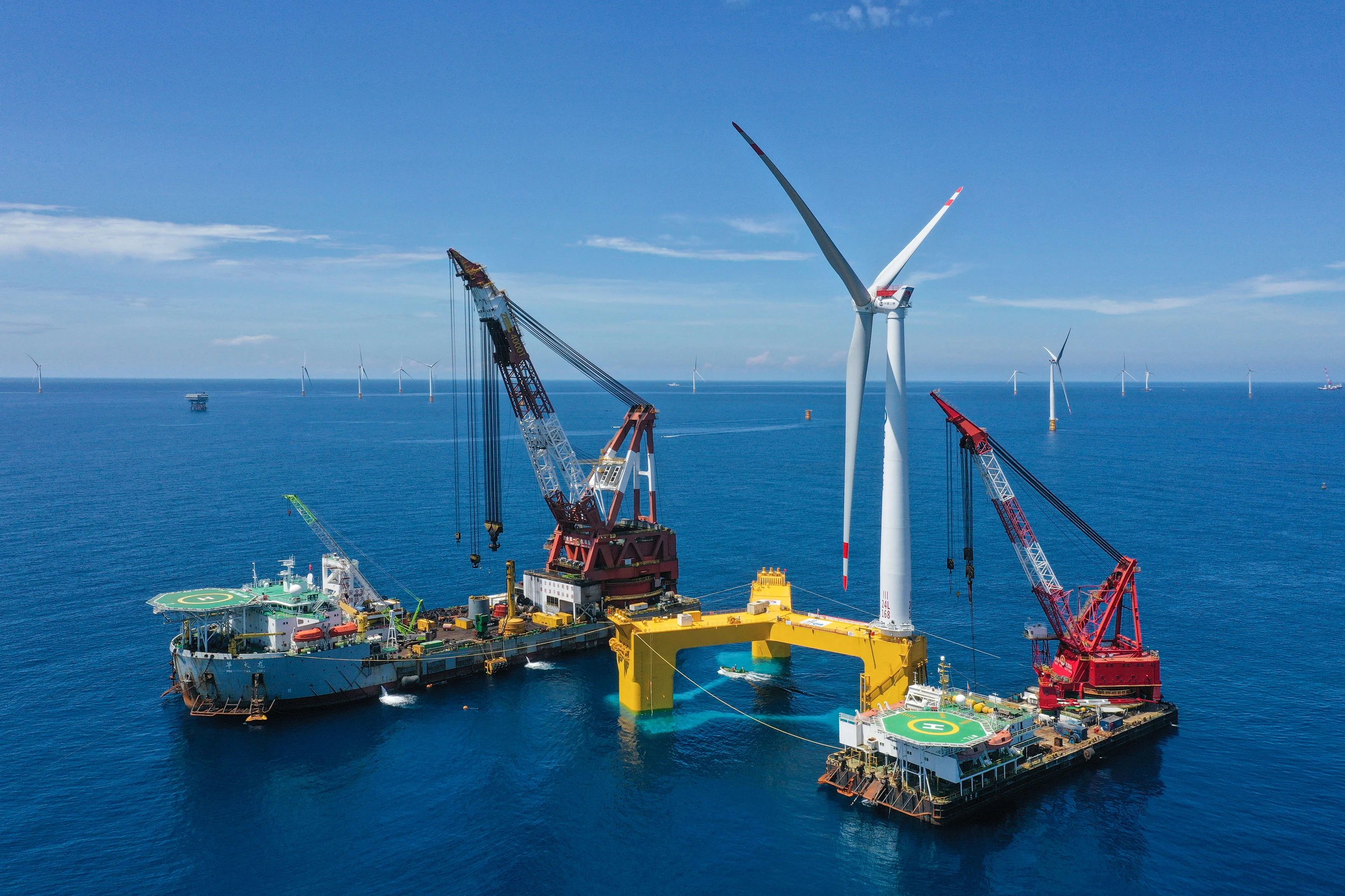
Advancing Business, Fueling Innovation
Louisiana’s role in offshore wind is already significant. Louisiana companies have been instrumental in constructing the foundational support for the U.S.’s first offshore wind installation off of Block Island, Rhode Island. Louisiana's workforce and businesses are also helping to advance new offshore wind projects in Virginia, Maryland, New York, and Massachusetts, providing surveyors, engineers, and shipbuilders. Additionally, ECO EDISON, the first U.S.-flagged service vessel for offshore wind, was constructed in Louisiana and services wind installations off the Northeast Atlantic coast.
Louisiana in Block Island
Strategic Position
Louisiana is uniquely positioned to lead in offshore wind energy, leveraging its status as the state with the fourth-highest technical offshore wind resource potential in the country. With the largest port complex in the Western Hemisphere and a vast maritime workforce, Louisiana has the infrastructure, geography, and skilled labor needed to capitalize on this rapidly growing industry. Louisiana’s array of energy resources supports our energy economy and reinforces our ability to ensure a consistent power supply.The state’s extensive experience in developing and maintaining infrastructure for the oil and gas industry, along with its port infrastructure and wealth of expertise in offshore fabrication and vessel building constitute a strong foundation for building out the offshore wind industry in the Gulf of Mexico.
The American Clean Power Association's 2024 Offshore Wind Market Report shows the clean power industry is projected to invest $65 billion in offshore wind projects by 2030, which will support 56,000 jobs in the United States. Almost 25% of all US contracts by volume in offshore wind are already going to businesses in Louisiana and other Gulf states – this is a strong start, and there is ample room for additional growth here in Louisiana. In late 2023, RWE secured the first federal offshore wind lease in the Gulf of Mexico, which has generated additional interest in nearshore wind energy projects inLouisiana. The state has awarded operating agreements to Diamond Offshore Wind and Vestas off the coast of Cameron and Terrebonne/Lafourche parishes respectively. These developments promise economic and workforce benefits, job creation and new opportunities for local supply chains, positioning Louisiana for long-term growth in this sector.
Environmental Impact Assessments
The Mississippi flyway, which extends through Louisiana, is a critical route for about 40% of North America's migrating waterfowl and shorebirds. Numerous studies in the U.K. and Europe over the past 20 years show that offshore wind developments pose a minimal risk to avian life. In the United States, regulations aim to prevent and minimize negative impacts of offshore wind turbines on migratory birds and marine mammals and their habitats. Advances in technology – bird-friendly turbine designs, visual enhancements such as changing colors on the blades, and radar systems – further reduce negative impacts. To fully understand the impact of developing and operating offshore wind on natural ecosystems, the Offshore Wind Roadmap will provide additional research and guidance on how birds and bats, marine mammals, sea turtles, and fisheries may be impacted.
Demand & Costs of Energy
The Annual Outlook Report 2022 from the U.S. Energy Information Administration projects energy consumption to increase in the United states, based on economic and population models. Louisiana does not produce enough electricity to meet in-state demand and relies on other states for approximately one-seventh of its power. While the Department of Energy (DOE) predicts the average cost of offshore wind energy will likely fall to $53/MWh by 2035 – a 20% drop, the development of a sustainable offshore wind industry in the Gulf of Mexico remains multifaceted with a spectrum of considerations to research and assess. Among these considerations are Louisiana's future energy needs, trends in retail and wholesale energy prices across various resources, and potential impacts and benefits for consumers. Strategic planning for Louisiana’s energy economy to be inclusive of an all of the above energy approach that incorporates offshore wind can make use of the state’s expertise in navigating energy markets. Louisiana's vast experience and expertise in tracking and setting trends in our nation’s domestic energy landscape over the past several decades can provide the guidance needed to expand our state’s energy portfolio into the future.
The Offshore Wind Roadmap
To effectively integrate offshore wind energy into Louisiana's energy landscape, the Louisiana Department of Conservation and Energy - LDCE (LDENR) is developing a comprehensive Offshore Wind Roadmap. This Roadmap is a holistic approach to encompass all factors of consideration in the development of offshore wind energy in Louisiana. The Roadmap will set the standard in the Gulf South by guiding future policies and strategies for workforce development, energy production, and global leadership in the offshore wind industry.






